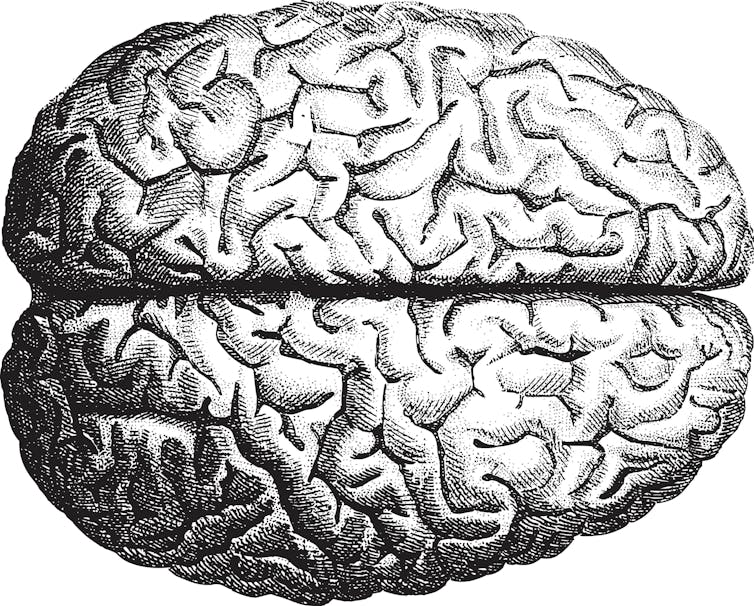A few years ago, the leader of Mexico’s PRI party told the New York Times that he, “would stick to tried and trusted campaign tools, like polls and political intuition”, and rely on “the old-fashioned way” to win the country’s election.
His party had been caught using neuroscience to gauge voters’ opinions about their candidate for the presidency and the party was embarrassed. Subsequently, we know from other sources the party carried on using neuroscience techniques. Someone even described their approach as “the new way to win elections”.
The approach is called neuropolitics and uses brain science to understand our politics. It applies the insights of neurology to explain why we take part in protests, vote for particular parties and even why we lie about our true feelings in opinion polls, potentially skewing the results to give the public a false impression of who is going to win.
I studied neuroscience before I gained a doctorate in political science. Back then the study of the brain was a utopian strain of research, but things have changed. And this has political implications. The Mexican case is one example of politicians exploiting neuroscience to their electoral advantage, but there are many others, which I write about in my new book The Political Brain.
It might seem like science fiction. But it is a fact. We already know a lot about how our brains influence our political beliefs and reveal our political views. Here are just four things your brain can reveal about your politics – and believe me, there are plenty more.
1. Which politicians you like
Let’s start with the basics. Advances in social neuroscience mean that we can identify the parts of the brain that get activated when you watch political advertisements – and a host of other things. We can do this because of functional magnetic resonance imaging (fMRI scans).
When we think, the brain needs oxygen. This oxygen is carried around with blood. Because blood contains iron, which is magnetic, it shows up in a magnetic scanner. So, if I see photos of a person in distress, more blood will flow to an area on the side of the brain called insula.

To take an example, when we want to buy something – or when we like a particular election candidate – we activate a part of the brain that is called the ventral striatum. It is part of the so-called basal ganglia, a part of the brain that is associated with rewards.
So, if your brain is activated when you see candidate A, it is a cue that you will vote for him or her.
This also works at the microlevel. When we like something, the area is bombarded with a neurotransmitter called dopamine. When we see photos or films of a candidate we like, there is more dopamine in the ventral striatum.
2. If you’re centre-left
We need to be cautious because the brain is a complex machine, and no single area is responsible for how we think. But some areas are associated with political thinking.
A study – co-written by actor Colin Firth – found that “greater liberalism [left-wing thinking] was associated with increased grey matter volume in the anterior cingulate cortex”. This part of the brain is associated with empathy. So, maybe this research proves that those on the left are more empathetic..
We should perhaps add that The King’s Speech, Pride and Prejudice and Bridget Jones’ Diary star was guest editing the BBC radio programme Today when he commissioned researchers to carry out the study. He doesn’t have a secret second career as a neuroscientist, though the work he proposed is legitimate science that has been through rigorous peer review and published in a top biology journal.
3. If you’re centre-right
That was the leftwing brain. What about conservatives or the centre-right? Well, individuals of this persuasion tend to be sceptical of change and cautious when they make choices. The brain region associated with these traits is the dorsolateral prefrontal cortex, on the topside of the brain.
Read more: Five signs that you might be rightwing
Sure enough, researchers found that this part was activated when subjects were exposed to video clips with political messages or images of people living alternative lifestyles – something that perhaps suggests a negative response to these lifestyles.
4. If you’re receptive to authoritarianism
So far we have looked at moderate leftists and moderate conservatives, but some people take more extreme positions. Some describe themselves as religious fundamentalists and are willing to use violence to stop abortion, for example. Others self-identify with the far right of the political spectrum.
A small study of these people found that their brains – when under the fMRI scanner – show signs of damage to the so-called ventro-medial prefrontal cortex. This is an area that is associated with social intelligence and tolerance.

It is tempting to draw conclusions, but it should be added that those with extreme views on both the far right and the far left show activation of the amygdala when they are shown clips of political opponents. Amygdala is the part of the brain that kicks in if we are in mortal danger, such as when we see a snake.
The predicting brain
Some might find this scary. Maybe it is. Whatever you think, we already know that we can predict ideology with up to 85% accuracy.
Neuropolitics is certainly weird, and perhaps even worrying but when used to in pure research, it opens the prospect of combining the natural sciences with the moral sciences. A bit like the philosopher David Hume dreamed of doing in the 18th century, when he endeavoured to “introduce the experimental Method of Reasoning into Moral Subjects”, we too can combine science and philosophy.
You might choose to ignore it. But, it is already being used in the real world of political advertising. It is no longer fiction. when it is abused, it can be dangerous. That’s why we need to talk about it.

